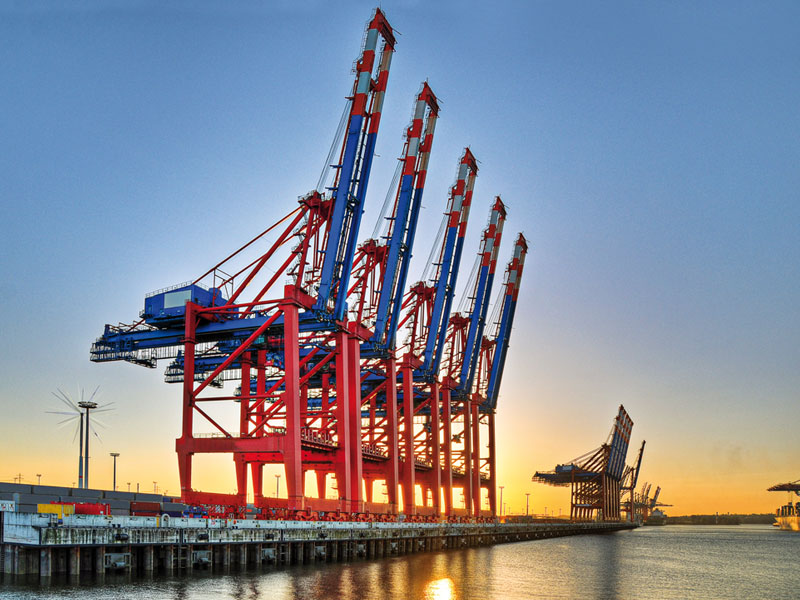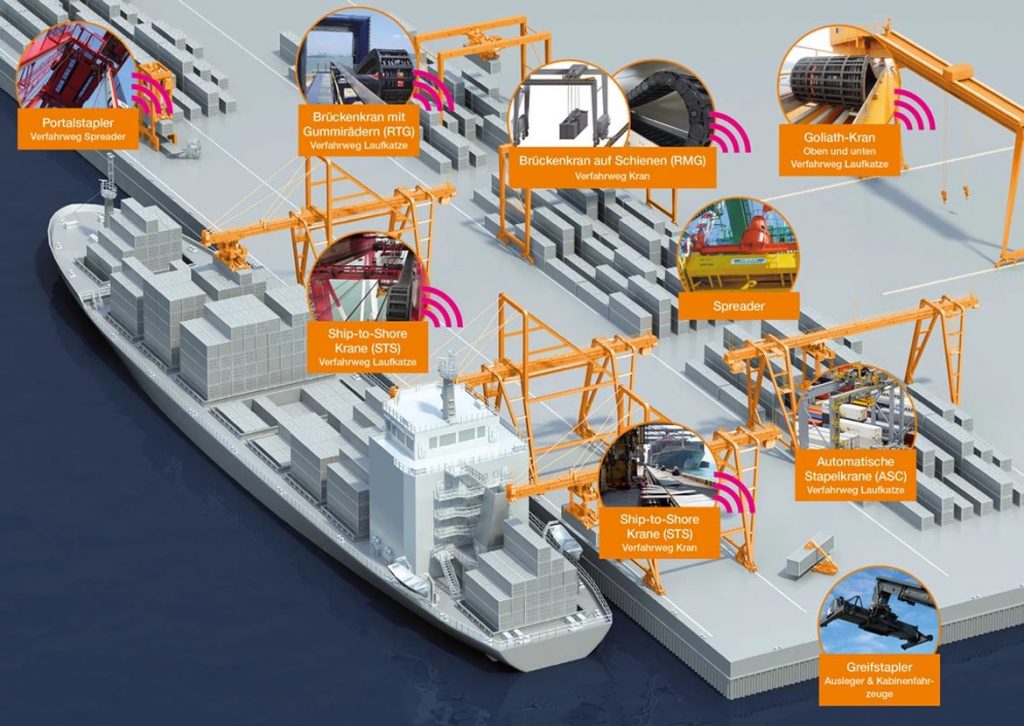Talking energy supply system on a crane
Richard Habering | 6. August 2021
Why should an energy supply system talk to me?
Maintenance and servicing for current crane systems is growing not only in size, but also control complexity. But there is no need to panic because, as you learned during your studies, you don’t need to know everything; you just need to know where to find the information you need. Unfortunately, not only the cranes themselves, but also their operating instructions have grown comparably, which means that this maxim doesn’t always apply. So now what?
How about a system that contacts the user without requiring the user to understand the system first? This is why we developed a talking energy supply system and taught the energy chain to speak. We explain just how it works in the next section.

How does an energy supply system talk?
Here, igus distinguishes between two types of communication:
- Simple error message with system shutdown as necessary (condition monitoring = i.Sense)
- Detailed maintenance recommendations (predictive maintenance = i.Cee)
The difference between these two is their focus. We could say that the direction of communication is from crane to user. In the first case, wear or another problem is already present and detected by the e-chain’s sensors. Force sensors on the e-chain® detect wear, errors, or other mechanical changes resulting from use. The i.Sense system’s communication is thus based on data from the past. Messages to the crane operator are always kept very simple. This technology prevents further damage and is based on measured mechanical data without complex programming. In the second case, the sensors are focused on future events. Machine learning and some artificial intelligence is used to provide the user with a maintenance schedule based on his usage profile. This eliminates fixed service times which are long, expensive, and often unnecessary – the energy chain itself knows what it needs and when.
The e-chain® has thus learned to talk.
What language does it speak, and with whom?
Low complexity means that the talking energy supply system and condition monitoring output options are very simple. The alarm can be freely selected and can take the form of a red lamp, an SMS, or a text message on the control panel. The following actions can also be initiated after it is triggered: Shutdown or continued operation with error message.
During predictive maintenance, the stream of data increases, but output channel selection also rises at the same rate. The most elegant solution is the i.Cee dashboard, which can be called up in the company network, the control system, or even a browser. This talking energy supply is currently restricted to the English and German languages.

Why it is important to network the manufacturer with the customer
The magic word is “data sharing”, since the system cannot learn and improve continuously without shared data. Data sharing is not indispensable for condition monitoring, but it is always a useful complement to other systems based on current data. But data sharing between manufacturer and operator is essential for optimal and continuously improving predictive maintenance. “Machine learning” and “artificial intelligence” may be unfamiliar, but they are comparable to human learning processes. If a person doesn’t receive up-to-date information – there is no fresh new data transfer, so to speak – he can’t learn anything new. And like the person, the crane would remain at the old, unimproved level of knowledge without data transfer. Updates are important for both humans and machines. These updates usually cannot be made physically in the system. That is why secure online networking with an i.Cee system has long been more than a mere idea – it has become a necessity.
Without networking, technical progress is difficult, since the next update is certainly on its way.

